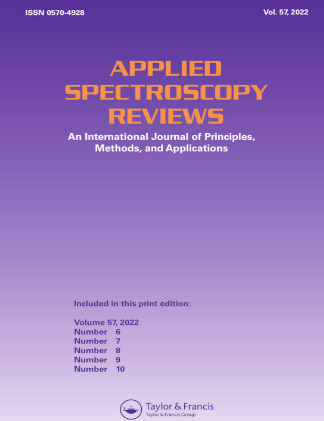室内空气中挥发性有机化合物测定方法概述
IF 5.4
2区 化学
Q1 INSTRUMENTS & INSTRUMENTATION
引用次数: 3
摘要
挥发性有机物是影响室内空气质量的一类广泛而重要的污染物。它们从商业产品、建筑材料、家具、居住者活动甚至居住者等中释放出来,可以参与室内化学与氧化剂的反应或由二次反应形成。一些挥发性有机化合物被列为致癌物,并与各种健康影响有关。表征和量化室内环境中的挥发性有机化合物对于实施预防措施以尽量减少人类接触至关重要。正确评估人类接触或描述排放源和室内活动需要适当和有效的抽样和分析方法。因此,本综述侧重于监测VOC的不同方法,在设计采样计划时必须考虑到测量的目标来选择这些方法。选择最合适的挥发性有机化合物评估程序需要对现有标准和离线(包括吸附介质的选择)以及在线仪器有适当的了解。了解不同可用技术的优缺点有助于规划未来的研究。本文章由计算机程序翻译,如有差异,请以英文原文为准。
An overview of methodologies for the determination of volatile organic compounds in indoor air
Abstract Volatile organic compounds are a broad and important class of pollutants affecting the indoor air quality. They are emitted from commercial products, building materials, furniture, occupant activities and even occupants, etc., and can participate in the indoor chemistry reacting with oxidants or being formed from secondary reactions. Some VOCs are classified as carcinogens and are associated with a variety of health effects. Characterizing and quantifying the VOCs in the indoor environments is of paramount importance in order to implement preventive measures to minimize the human exposure. A correct assessment of human exposure or characterization of emission sources and indoor activities requires appropriate and efficient methods for sampling and analysis. Therefore, this review focuses on the different methodologies for monitoring VOC that must be selected when a sampling plan is designed considering the objective of the measure. Selecting the most suitable procedures for assessing VOCs requires proper knowledge on the existing standards and off-line (including the selection of the sorbent media) and online instrumentation. Knowing the advantages and drawbacks of the different techniques available can help to plan future studies.
求助全文
通过发布文献求助,成功后即可免费获取论文全文。
去求助
来源期刊

Applied Spectroscopy Reviews
工程技术-光谱学
CiteScore
13.80
自引率
1.60%
发文量
23
审稿时长
1 months
期刊介绍:
Applied Spectroscopy Reviews provides the latest information on the principles, methods, and applications of all the diverse branches of spectroscopy, from X-ray, infrared, Raman, atomic absorption, and ESR to microwave, mass, NQR, NMR, and ICP. This international, single-source journal presents discussions that relate physical concepts to chemical applications for chemists, physicists, and other scientists using spectroscopic techniques.
 求助内容:
求助内容: 应助结果提醒方式:
应助结果提醒方式:


